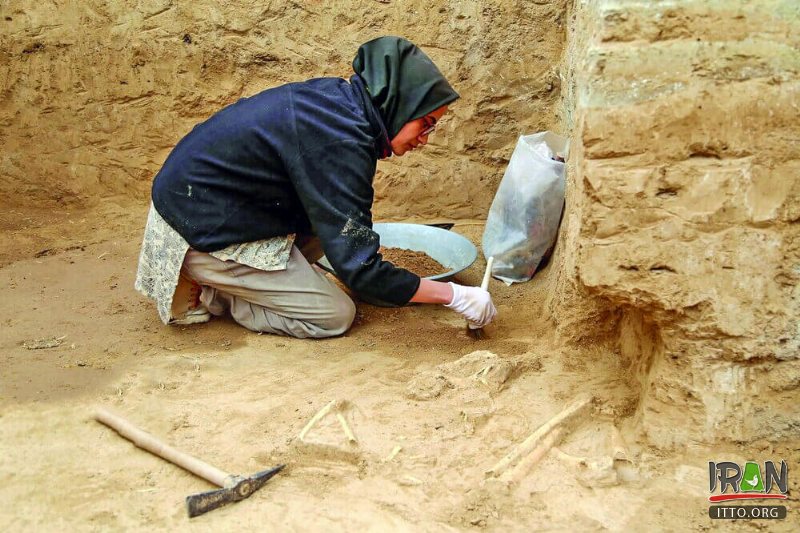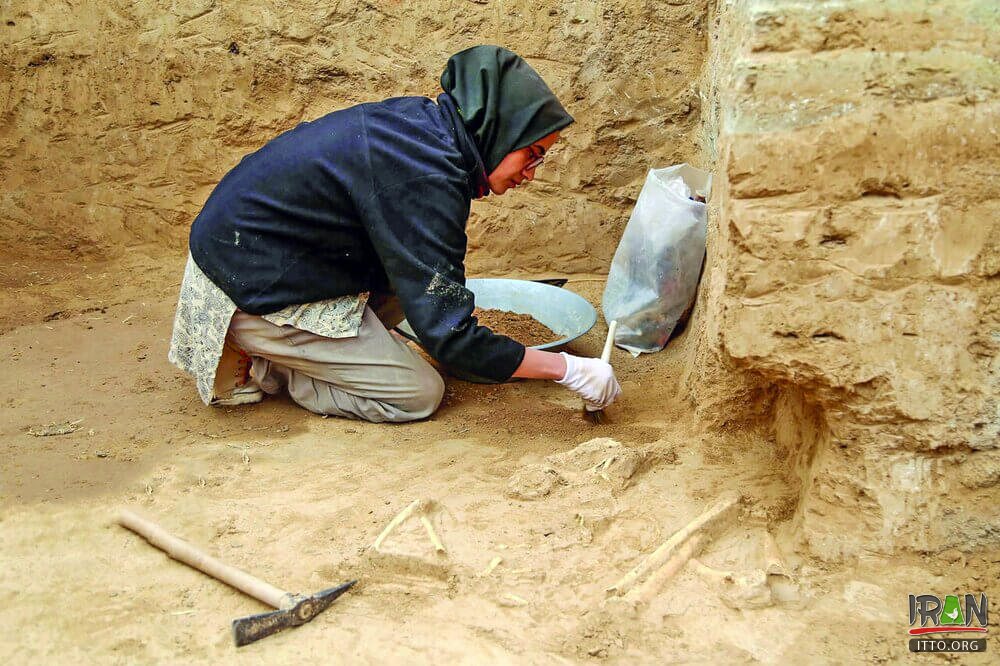A group of Iranian archaeologists and fellow international experts have recently commenced a fresh round of exploration in the Burnt City, a UNESCO-registered site in southeastern Iran.
Called “Shahr-e Sukhteh” in Persian, the Burnt City is associated with four rounds of civilization, all burnt down by catastrophic sets of fire. It is situated in Sistan-Baluchestan province, which was once a junction of Bronze-Age trade routes crossing the Iranian plateau.
“The 18th archaeological season in the prehistorical site of Shahr-e Sukhteh has begun in collaboration with the Italy’s University of Salento and [the project] will last for 35 days,” senior Iranian archaeologist Seyyed Mansour Seyyed Sajadi said on Saturday, IRNA reported.
“This excavation work takes place in a [formerly] residential area of the 5,000-year-old site.”
“The goal is to reach older urban sections because most of the excavations so far have been related to the second, third, and fourth periods and less information about the times prior to these eras,” the expert noted.
The expert also addresses some limitations that such a project faces in the country, adding “Given some limitations, [our] excavation is focused on studies of zoology, botany, and anthropology because these excavations could yield a lot of information about the animals, plantation and human life in the Burnt City.”
Back in May, archaeologists discovered remains of a prehistoric monkey in the Burnt City, concluding that the animal was held in captivity in a cage when it died.
Based on surveys and scientific studies on the monkey’s skeleton, the animal was dead in captivity in a cage and it was buried by its owner like a child within a beautiful container, Seyyed Sajjadi noted at that time.
Talking on the importance of the discovery, the archaeologist cited two reasons: “First, this type of monkey is not originally lived in the Iranian Plateau and based on [our] studies, such an animal was found [in a region] from northern India to the borders of China and Central Asia, so the monkey was one of the imported goods to the Burned City.”
“Since the Burned City had lots of commercial relations with the eastern territories of Iran such as northern India and central Asia, and there is a lot of information in this regard, we found that the monkey came from there.”
“The other issue is that in the ancient world, monkeys were essentially regarded as a luxury and aristocratic belongings. And they were imported to be presented to people of certain social classes such as elites, merchants, governors and religious authorities,” he explained.
Founded around 3200 BC, the Burnt City was populated during four main periods up to 1800 BC. Previous rounds of excavations showed that its residents had great skills in weaving, creating fine arts such as decorative objects, stone carving, and pottery painting.



